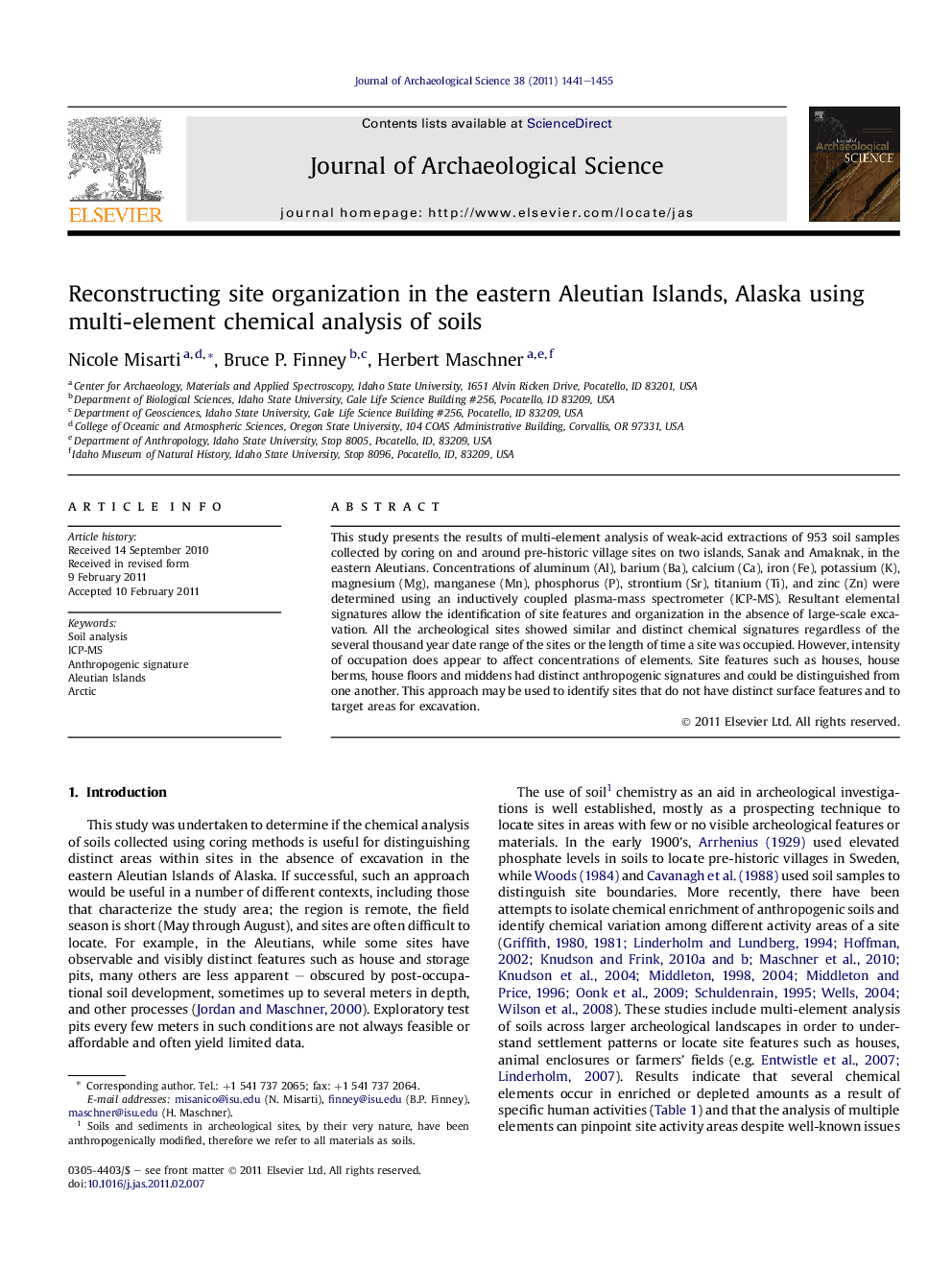| کد مقاله | کد نشریه | سال انتشار | مقاله انگلیسی | نسخه تمام متن |
|---|---|---|---|---|
| 1035840 | 943867 | 2011 | 15 صفحه PDF | دانلود رایگان |

This study presents the results of multi-element analysis of weak-acid extractions of 953 soil samples collected by coring on and around pre-historic village sites on two islands, Sanak and Amaknak, in the eastern Aleutians. Concentrations of aluminum (Al), barium (Ba), calcium (Ca), iron (Fe), potassium (K), magnesium (Mg), manganese (Mn), phosphorus (P), strontium (Sr), titanium (Ti), and zinc (Zn) were determined using an inductively coupled plasma-mass spectrometer (ICP-MS). Resultant elemental signatures allow the identification of site features and organization in the absence of large-scale excavation. All the archeological sites showed similar and distinct chemical signatures regardless of the several thousand year date range of the sites or the length of time a site was occupied. However, intensity of occupation does appear to affect concentrations of elements. Site features such as houses, house berms, house floors and middens had distinct anthropogenic signatures and could be distinguished from one another. This approach may be used to identify sites that do not have distinct surface features and to target areas for excavation.
► Multi-element analysis of weak-acid extractions of 953 soil samples.
► The identification of site features and organization through elemental analysis.
► Intensity of occupation affects concentrations of elements.
► Houses, house berms, house floors and middens had distinct signatures.
Journal: Journal of Archaeological Science - Volume 38, Issue 7, July 2011, Pages 1441–1455